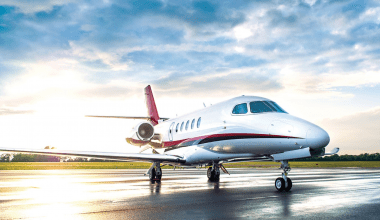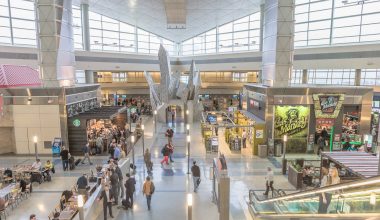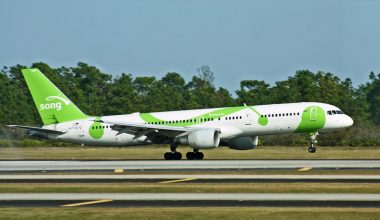JetBlue’s flight 292 between Burbank and New York City had to make an emergency landing due to the malfunctioning of the nose gear. This incident occurred on 21st September 2005 where JetBlue flight 292 had to make an emergency landing at the Los Angeles International Airport.
So what exactly happened with JetBlue flight 292 on that day?
Regular Flight
JetBlue flight 292 regularly operated services in between John F. Kennedy International Airport, New York, and Bob Hope Airport in Burbank. The airline was operating its regular flight 292 on the day of the incident with an Airbus A320-233 aircraft registered as N536JB.
For the scheduled flight, 140 passengers boarded the plane accompanied by 6 of the flight crew members on 21st September 2005. The Airbus departed from the Burbank airport at 3:17 pm and was scheduled to cover 2,500 miles to reach its destination in New York. The first officer flying the JetBlue flight 292 didn’t notice any problem with the aircraft in the initial take-off. The National Transportation Safety Board(NTSB) also confirmed the aircraft had had a positive rate of climb and everything was going smooth.
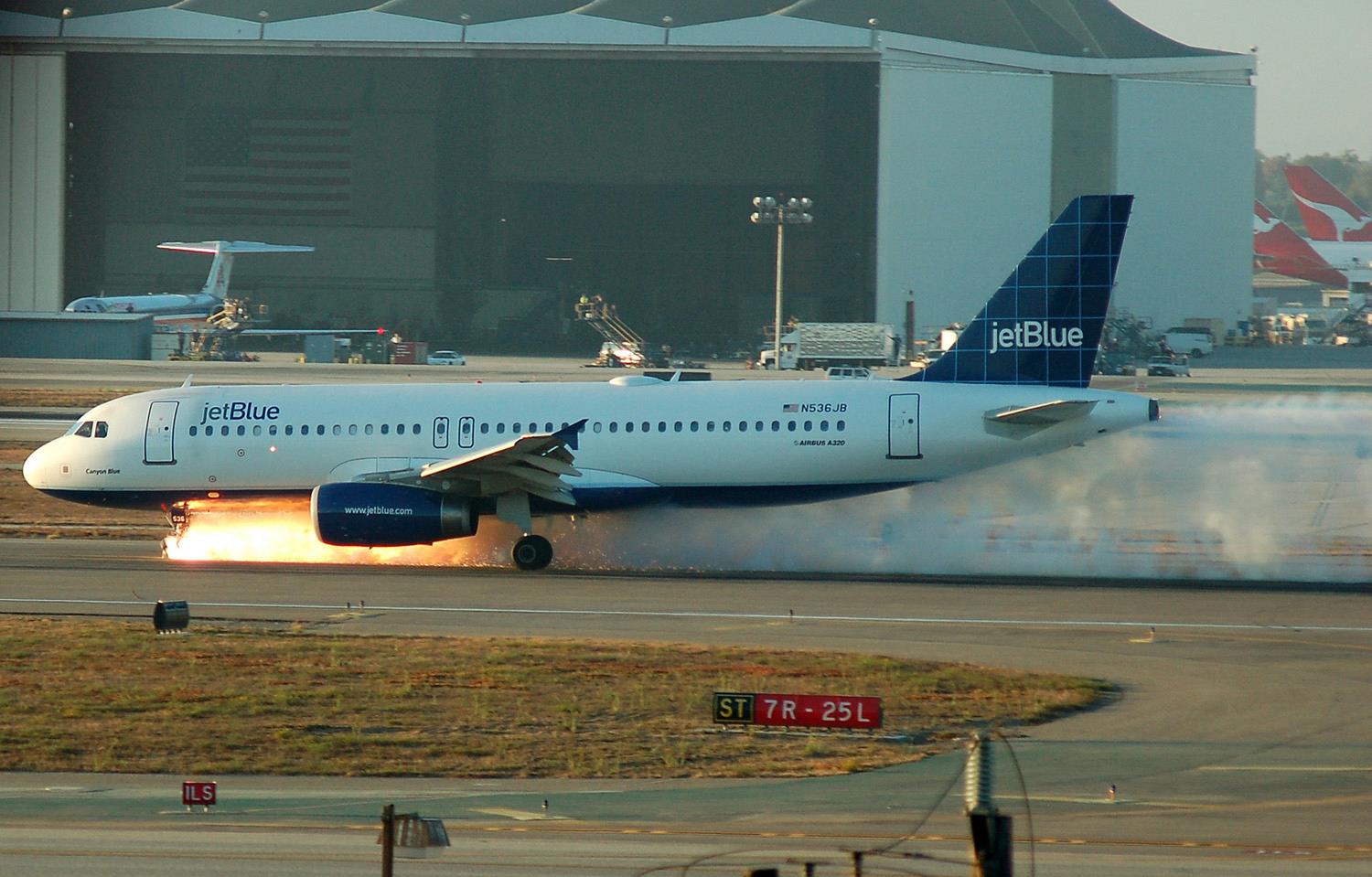
However, after a few minutes on the air, the flight crew was notified of an error message on the Electric Centralized Aircraft Monitor(ECAM) screen. The flight crew was not able to retract the nose landing gear. After that, the pilot consulted with the flight crew about the situation; the first officer of the JetBlue flight 292 flew over Palmdale city. But, it became evident that the flight would not make it all the way to their destination in New York.
JetBlue flight crew circled Southern California for hours and diverted the flight to Long Beach. The pilot of the JetBlue flight 292 decided to do a flyby of the tower for visual confirmation of the outer part of the aircraft with the flight control officer. The effort was fruitful as the JetBlue flight control officer at the tower ground personnel, and a local news helicopter noticed that the nose landing gear was canted 90° towards the left. With this information, the pilot of the JetBlue flight 292 decided to land the aircraft at the Los Angeles International Airport rather than turning back to Burbank.
The pilot chose the Los Angeles International Airport for the emergency landing because the airport has optimum field conditions, lengthy runways, and better emergency support services. All that was left for the JetBlue flight 292 was reaching the optimum landing weight to touch the ground, so they circled over Southern California to reach the weight limit. The Airbus aircraft circles the Long Beach Airport situated 30 miles south of the Bob Hope Airport in Burbank.
The JetBlue flight 292 stayed in the air for 3 hours to burn the extra fuel and reach a safe landing weight.
Emergency landing televised in the Jetblue flight 292
As everyone was praying for the safe landing of the JetBlue flight 292, the 140 passengers in the flight also streamed the live news in the flight that was circling around their life-or-death situation. The satellite TV set in the aircraft was tuned to the news broadcasts that why everyone got the news about their situation through various sources. That’s when the chaos broke out; people started panicking and crying, seeing their flight’s coverage on the live TV.
In such circumstances, everybody gets scared of what is going to be; however, the situation could have been a lot calmer without the live coverage to the crew and passengers trapped inside the plane. The passengers who could collect themselves in that situation even tried calling and texting their family and dear ones to comfort them in case of a worse outcome.
The live coverage of the plane landing lasted until moments before landing; the JetBlue flight 292 monitors carried the live broadcasting until a few minutes before making the touchdown at the Los Angeles International Airport.
Landing at LAX
After the flight crew decided to land at the Los Angeles International Airport(LAX), the officials at the airport anticipated and prepared themselves for the emergency landing of the JetBlue flight 292 two hours prior to the aircraft’s arrival.
The aircraft carrying 140 passengers and six crew members en route to the John F. Kennedy International Airport taking off from Bob Hope Airport successfully made an emergency landing at the LAX airport at 6:18 pm. The JetBlue flight 292 pilot Scott Burke’s decision to make the emergency landing at the LAX prevented worse outcomes from the incident; none of the 146 passengers and crew members in the flight were injured. The landing was made on the LAX’s southernmost runway 25L, while smoke and fire emanated from the aircraft’s front landing gear before it made a safe stop.
The landing of JetBlue flight 292 was delayed due to the inability of the aircraft to dump the fuel; the pilot had to circle in the region for hours before reaching the safe landing weight, although the officials at the LAX were prepared nearly two hours before the landing of the Airbus A320 aircraft at 6:18 pm.
The spokeswoman at the LAX, Nancy Castles, revealed that the airport was notified about the approach of the JetBlue flight 292 at 5:08 pm on the 21st September, but the officials were aware of the situation and prepared themselves for the possibility of the plane coming to the airport before getting notified. The official had begun the emergency landing preparation after watching the live coverage of the incident at about 4 pm. The officials at the LAX were 98% sure on the probability of the JetBlue flight 292 heading for the airport for an emergency landing.
The Airport officials at LAX started notifying the staff about the possible emergency landing of the JetBlue flight and started mobilizing the resources at 4:15 pm, although the airport had not received any sort of official notification about the aircraft’s landing destination. Including the two City of Los Angeles Fire Department stations on the Los Angles International Airport’s airfield, the airport’s first emergency responders, more than ten units from the surrounding fir4e station were deployed on the airfield to respond to the emergency landing of the JetBlue flight 292.
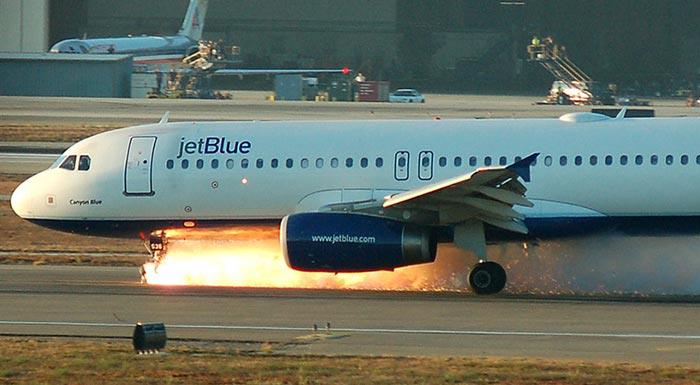
Los Angeles Police Department (LAPD) and Airport police worked together to set up a perimeter around the airport and the surface streets to minimize the possible casualties. Nearly 130 law enforcement officials were present at the LAX’s airfield, and more were on standby for the aircraft’s emergency landing. By the time JetBlue flight 292 touched the ground, all the personnel from different agencies were already on the airfield prepared to attend to the passengers.
The LAX officials had considered all the possible outcomes of the landing of the aircraft, from a potential crash to overshooting of aircraft and landing in the ocean. Assistant Chief of City Fire Department Roy Kozaki stated the personnel at the airport were prepared for every possible outcome of the situation; the assistant chief had also deployed coast guard boats to the surrounding waters near the airport in case of aircraft overshooting and landing on the ocean.
After the plane landed at the 25L runway at LAX, the safety official deplaned the passengers through the Airbus’s staircase as there was no fire at the stop, there was no need for emergency evacuation.
Cause of the incident
The NTSB launched an investigation of the incident after its hard landing at the LAX airport; the Airbus aircraft was taken to the Continental Airlines maintenance area. The board of the NTSB revealed that the examination of the nose wheel assembly of the JetBlue aircraft showed fractured and separated anti-rotation lugs. Two of the four anti-rotation lugs on the upper support assembly had fractured and separated from the support assembly, and the rest of the two lugs contained cracks.
According to the federal documents, there had been at least three and possibly six similar incidents with the Airbus A320 aircraft where the nose landing gears had turned sideways just like the JetBlue flight 292. All of those incidents dealt with the front landing gear issues, and the NTSB investigated the similarities between the nose landing gear incident of those aircraft and the JetBlue incident.
Afterward, Airbus also issued an Operations Engineering Bulletin, which provided technical information on the procedure of resetting the in-flight Brake Steering Control Unit, which controls the nose landing gear.

